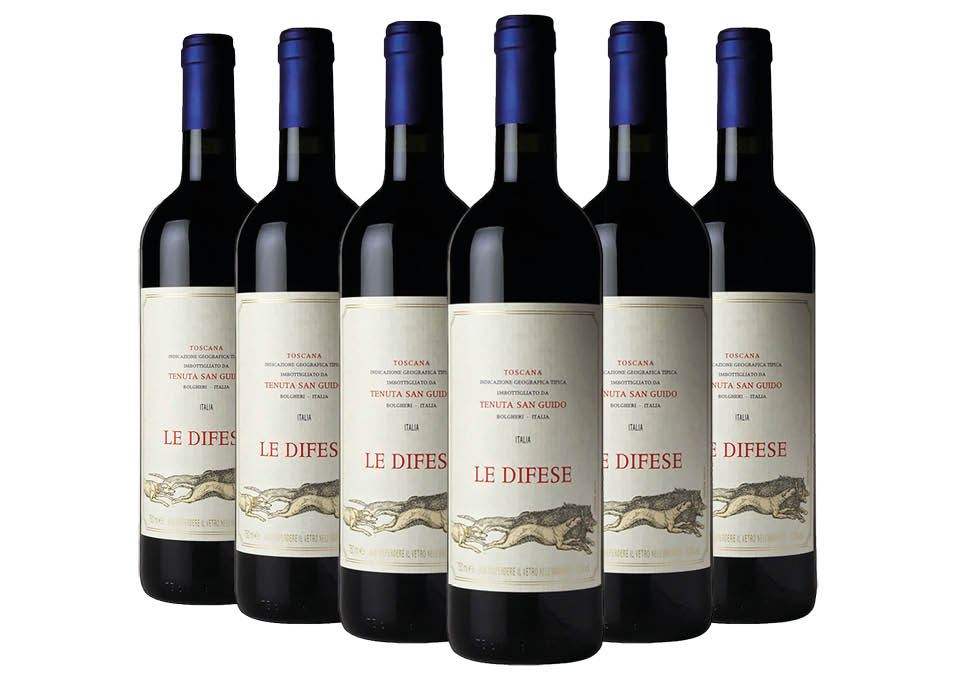Tenuta San Guido
Tenuta San Guido, located on the Etruscan coast between Livorno and Grosseto, is the motherland of one of the most loved wines in the world, Sassicaia. The estate takes its name from San Guido della Gherardesca, a famous character of the thirteenth century and extends for 13 kilometers in the splendid lands of the Tuscan Maremma. Mario Incisa della Rocchetta settled here in the 1920s, with the aim of creating a "thoroughbred" wine in an area not yet known from a wine-making point of view. His ideal was Bordeaux and for this he experimented with some French vines, coming to the conclusion that Cabernet was the right one: thus Sassicaia was born, a wine so exceptional that it deserves a specific DOC to identify it ( Bolgheri Sassicaia DOC), the only one in Italy to be entirely included in a single property, that of Tenuta San Guido. In addition to Sassicaia and the other excellent wines produced here, Tenuta San Guido is renowned for hosting the thoroughbred Dormello Olgiata horses and the Padule di Bolgheri Wildlife Refuge, the first in Italy.
Tenuta San Guido Red Wine
The different types of Tenuta San Guido red wine originate from 90 hectares of vineyards located at various altitudes: some at about 80 meters above sea level, others on the gentle hills of the Tuscan hinterland, at 200 or 300 meters above sea level. warm and dry, but always mitigated by the sea breezes and the perfect exposure of the vineyards are essential elements to create complex wines with a unique character. From the Cabernet Sauvignon and Cabernet Franc vines within the Bolgheri Sassicaia DOC, the Estate obtains its most famous and important wine, Sassicaia. In addition to international vines, such as Cabernet or Merlot , Tenuta San Guido also cultivates a vine typical of the Tuscan tradition, Sangiovese , which when blended with Cabernet Sauvignon gives rise to an excellent Tuscan IGT red: Le Difese. The careful subdivision of the vineyards based on the terrain and exposure, the spurred cordon training system and the very low yield of grapes per vine have guaranteed the international success of the Tenuta San Guido brand, whose best wines are available on Vino. com.
How is Sassicaia wine born?
Sassicaia wine was born from the intuition of Mario Incisa della Rocchetta, who, having moved with his wife to Tenuta San Guido, decided to create the first "Bordeaux" wine in Maremma: an absolute novelty, both with respect to the Tuscan tradition of Sangiovese, and because that specific area was still unknown from a wine making point of view. As a grape he chose Cabernet, which had the most suitable bouquet for the wine he had imagined and which came from an area, Graves (in Bordeaux), with a soil similar to that of the Bolgheri sassicaie in Tenuta San Guido. Not surprisingly, graves in French means "gravel", due to the stony ground of that area; similarly, Sassicaia indicates an area with the same morphology. Here, the breezes coming from the sea, mitigated by the barrier of the internal wooded areas and the land particularly suited for the cultivation of Cabernet create the perfect habitat for Sassicaia. The wine, initially produced for family use only, was put on the market for the first time with the 1968 vintage, immediately receiving a success as a Premier Cru Bordolese. Today it is one of the most famous wines in the world, to which a DOC was dedicated in 1994: the DOC Bolgheri Sassicaia, which encloses the vineyards of the Tenuta San Guido. A wine of great elegance, with fine and soft tannins, which is available on Vino.com.
What are the characteristics of the Bolgheri Tenuta San Guido?
The Bolgheri produced in the Tenuta San Guido is the Bolgheri Sassicaia DOC, which has very specific characteristics, dictated by the production regulations: it is made up of at least 80% Cabernet Sauvignon grapes, grown exclusively within the Sassicaia farm. The spurred cordon training system, together with the very low yields per vine, generate grapes of high quality, which give the wine an elegant aroma and a full but balanced taste. Aging takes place in barriques for 24 months and then ends with a further period of refinement in the bottle.





